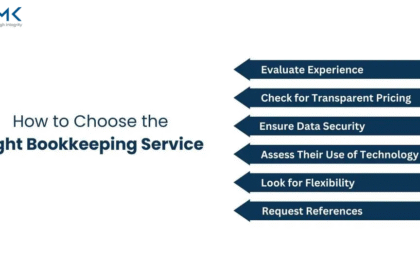
User engagement is the lifeline of any digital product. Whether it’s a mobile app, SaaS platform, or website, your design must not only look good but also keep users active, satisfied, and coming back.
Great UX/UI design focuses on making interactions intuitive, meaningful, and enjoyable. Here are the best practices every designer should follow to boost user engagement and improve overall product success.
1. Keep the Interface Simple and Intuitive
Users should instantly understand how to use your product without reading instructions. Simplicity boosts engagement because it reduces cognitive load.
Best Practices:
- Use clean layouts with minimal distractions.
- Keep only the most essential actions on each screen.
- Provide clear CTAs (Call-To-Actions).
- Stick to familiar design patterns users already trust.
Remember: Confusion kills engagement. Clarity boosts it.
2. Prioritize Fast Load Times and Smooth Performance
Even a beautifully designed product will fail if it loads slowly. Users expect instant response. Every second of delay increases bounce rates.
Improve performance by:
- Compressing images and graphics
- Using lightweight UI components
- Optimizing code and animations
- Adding skeleton screens or loaders
Speed = higher engagement.
3. Create a Clear Visual Hierarchy
To guide users effortlessly through your interface, you need strong visual structure.
How to achieve this:
- Use size, color, contrast, and spacing to highlight important elements.
- Keep primary buttons visually distinct.
- Group related items together.
- Make titles and headings scannable.
If everything stands out, nothing stands out.
4. Use Microinteractions to Enhance Engagement
Microinteractions are small animations or responses that give feedback to users. They make the experience more human and enjoyable.
Examples:
- A button that changes color when clicked
- A heart icon that animates on “Like”
- A progress bar during loading
- Haptic feedback on mobile
These tiny moments increase delight and keep users emotionally involved.
5. Personalize the User Experience
Personalized experiences lead to higher engagement because users feel the product understands them.
Ways to personalize:
- Show recommended content based on user behavior
- Adjust dashboard layouts based on frequently used features
- Use names and custom greetings
- Provide smart suggestions
Personalization = relevance. Relevance = engagement.
6. Design for Mobile-First and Thumb-Friendly Interaction
Most users browse on mobile, so your design should be accessible and ergonomic.
Mobile-friendly practices:
- Place important actions in the thumb-friendly zone
- Use larger touch targets (44–48px)
- Keep forms short and simple
- Ensure text is readable on small screens
A mobile-first experience ensures seamless engagement everywhere.
7. Maintain Consistency Across All Screens
Consistency builds trust. When users don’t have to re-learn patterns, they engage more confidently.
Maintain consistency with:
- Reusable UI components
- Standardized buttons, colors, and typography
- Predictable navigation patterns
- A well-structured design system
Consistency creates familiarity—and familiarity boosts engagement.
8. Improve Accessibility for All Users
Accessibility improves engagement by ensuring every user can interact with your product comfortably.
Accessibility tips:
- Use high-contrast colors
- Provide alt text for icons and images
- Support screen readers
- Allow font size adjustments
- Avoid relying only on color to convey meaning
Accessible design is inclusive design—and inclusive design keeps users engaged.
9. Test Continuously and Iterate Quickly
User behavior reveals where engagement drops. Testing helps you identify friction points early.
Test using:
- Usability testing
- Heatmaps (Hotjar, Microsoft Clarity)
- A/B testing
- User feedback and surveys
The best products are built through continuous refinement.
10. Use Meaningful Onboarding to Reduce Drop-Off
Good onboarding teaches users how to use your product effectively—boosting long-term engagement.
Effective onboarding includes:
- Simple walkthroughs
- Tooltips and hints
- Interactive onboarding
- Clear value explanation
- Option to skip
A strong first impression leads to lasting engagement.
1. Understanding User Needs and Behaviors
A seamless digital experience starts with understanding who the users are and what they need. Before a single screen is designed, UI/UX designers conduct extensive research to uncover user goals, motivations, and pain points.
Key methods include:
- User interviews – to understand real-life challenges and expectations.
- Surveys and questionnaires – to gather data from a broader audience.
- Competitor analysis – to identify gaps in existing market solutions.
- Persona creation – to represent different user types.
This research helps designers create products that not only look good but also solve real problems effectively.
2. Mapping the User Journey
Once user research is complete, designers map the user journey — the path a user takes to achieve a goal (like purchasing a product or signing up for a service).
By visualizing each touchpoint, designers identify areas of friction and opportunities for improvement.
Example:
In an e-commerce app, the journey may include:
- Browsing categories
- Viewing product details
- Adding to cart
- Checkout and payment
The goal is to ensure this entire journey feels smooth, intuitive, and enjoyable.
3. Crafting Intuitive Information Architecture
Information Architecture (IA) is the backbone of a seamless experience. It determines how content is structured and organized so that users can find what they need without confusion.
Good IA means:
- Logical navigation menus
- Clear categorization of content
- Consistent labeling and naming conventions
- Easy access to frequently used features
A well-organized structure makes users feel in control — and that’s the foundation of great UX.
Conclusion
Improving user engagement starts with understanding user needs, simplifying interactions, and creating an experience that feels natural and enjoyable. When your UX/UI focuses on clarity, performance, consistency, and emotional connection, users don’t just visit—they stay, explore, and return.
At Devoq Design, a leading UI/UX design agency, we help brands create digital products that maximize engagement and deliver a delightful user experience from start to finish.


